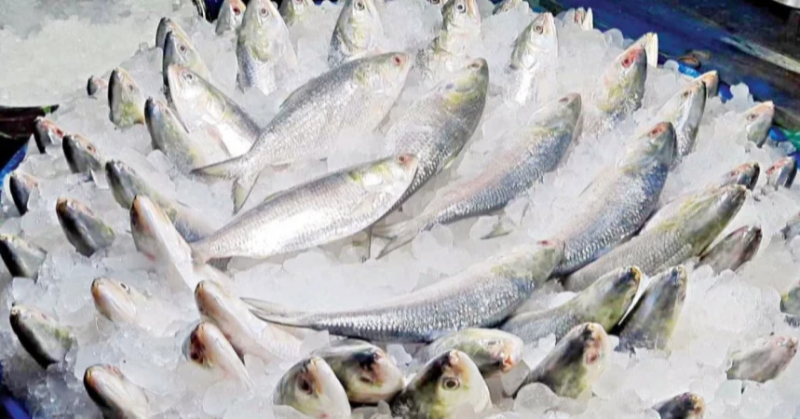- Japan Issues Tsunami Alert After Strong 7.6 Quake |
- Bangladesh Plans Record Flag-Parachute Display on Victory Day |
- UN Launches $33 Billion Appeal to Aid 135 Million People |
- CA urges united efforts to stop food contamination voicing concern |
- Tarique obliquely slams Jamaat for ‘propaganda’ against BNP echoing AL |
Hilsa Becomes Luxury as Prices Soar Amid Fishing Ban

Hilsa Becomes Luxury as Prices Soar Amid Fishing Ban
Once a weekly staple, the prized national fish hilsa has become a luxury for many, with prices surging nearly 50 percent over the past year amid rising market costs.
A recent survey by the Bangladesh Trade and Tariff Commission (BTTC) found that between August and September alone, hilsa prices jumped by Tk 200–500 per kg, with large specimens sometimes fetching an astonishing Tk 1,000 increase.
Last August, a 1.5 kg hilsa sold for up to Tk 2,000 per kg; by 2025, the same fish commands Tk 3,000, reflecting a sharp 50 percent rise in just twelve months.
In Dhaka’s bustling kitchen markets, river fish are nearly disappearing from shelves due to the government’s annual fishing ban aimed at preserving the species. Locally caught fish like rui, katla, koi, and shing have filled the gap, but at significantly higher prices.
For shoppers, spotting hilsa often comes with sticker shock.
“Just before the ban, buyers rush to stock hilsa, which automatically pushes up the price,” said Enamul, a fish trader at Shantinagar market. Another vendor at Karwan Bazar noted that wholesale prices have surged, forcing retailers to raise rates even without a supply disruption.
Hilsa catching and sales are banned for 22 days each year, from October 4, yet the fish has become almost unattainable for consumers.
“A decade ago, big hilsa were sold in pairs for under Tk 2,000. Now, buying just one costs at least Tk 5,000,” lamented Mohibur Rahman. Shoppers like Arif Hossain expressed frustration at the paradox of the ban.
“Fishing, transportation, and marketing of hilsa are banned for 22 days annually. The government says this increases production, but prices skyrocket once the ban is lifted,” he said.
Middle-class families, who once relished freshly fried hilsa on weekends, now have to compromise.
“Hilsa is our national fish, and its price should be affordable for everyone. But it’s being sold at exorbitant rates. For middle-class families, buying hilsa has become a luxury,” said Shagufta Akter Lipi. Many households have turned to cheaper alternatives for protein.
Despite soaring prices, fishermen often see little profit. In Bhola, the country’s largest hilsa-producing district, most rely on leased boats and loans from wholesalers, locally called dadon. They are usually forced to sell their catch at fixed rates, leaving minimal gains.
“Our share is tiny. After repaying the dadon money, little remains,” said veteran fisherman Khalek Majhi.
The BTTC study highlights the convoluted journey of hilsa from river to table. Typically, the fish passes through five intermediaries—fishermen, landing stations, wholesalers, commission agents, and retailers—before reaching consumers. While fishermen earn only Tk 800 per kg for large hilsa, the same fish sells for Tk 3,000 in Dhaka markets.
The study further breaks down costs: fishing expenses range from Tk 470–500 per kg, resale margins often add Tk 1,000, and additional costs include Tk 75 for wholesale-to-retail transfers, Tk 150 from retail to consumer, and commissions exceeding 10 percent in some cases.
Syndicate practices, including cold storage stockpiling, further inflate prices.
“Hilsa prices naturally rise by over 60–70 percent due to multiple handovers, and syndicate manipulation makes it worse,” noted Sabbir Hossain Khan, an agricultural economist.
To tame rising prices and ensure fair returns for fishermen, the BTTC recommends reducing the number of middlemen. Proposed measures include empowering fishermen’s cooperatives or setting up government marketing outlets to supply hilsa directly during peak season, offering hope that the nation’s cherished fish could one day return to the average dinner table without burning a hole in household budgets.

